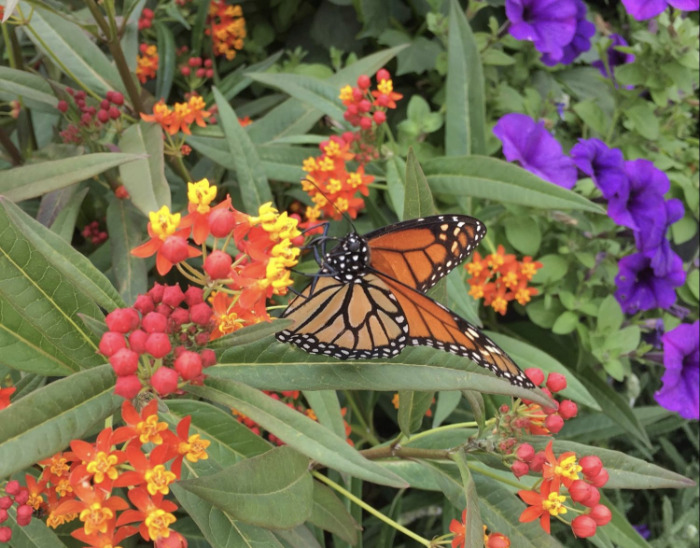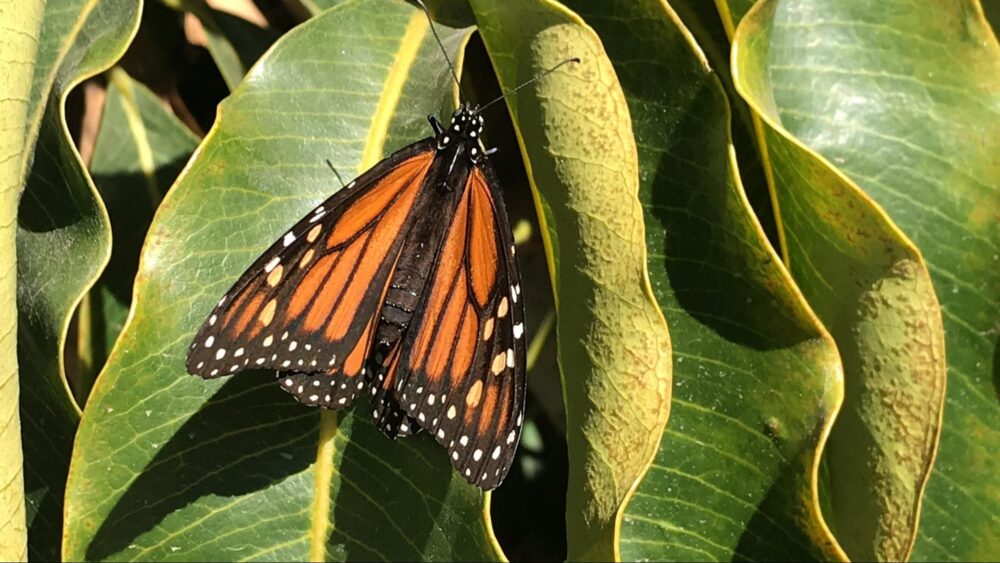
By Arden Nguyen
You may have taken care of monarch butterflies at school when you were younger or learned about their unique migration behavior. If not, you have probably seen one at the very least.
But the days of spotting these orange butterflies in your yard could be coming to an end because monarch butterfly numbers are falling.
There are two groups of monarch butterflies in North America―Eastern and Western―and both populations are decreasing, but it is the Western living nearer to us in California that has faced a larger drop.
According to the Xerces Society for Invertebrate Conservation, a 2020 Western monarch butterfly count showed a “99.9% decline since the 1980s.” It is clear that we must act fast if we want to save them from extinction.
Ecology of monarch butterflies
During the winter, Eastern monarchs migrate south to central Mexico, while Western monarchs rest along the California coast (including Southern California) all the way down to Baja California in Mexico.
Since the butterflies cluster on trees, deforestation and land development limit the areas where they can settle. Climate change is another threat because it inhibits the growth of milkweed, which caterpillars feed on, and leads to severe changes in weather that hinder migration.
“[T]heir migration pattern is determined by the seasonal sunlight patterns and weather so they are a victim of climate change in that the colder and wetter weather along with out of season extreme weather events has altered their migration and population sizes,” Advanced Placement Environmental Science teacher Terah French said.
As prey and pollinators, monarch butterflies play an important role in the health of their ecosystem, so their disappearance could be detrimental.
“[Monarch butterflies] provide a food source for ants, praying mantids, wasps, spiders, birds, toads, and mice,” French said. “A decrease in their numbers would reduce flower pollination along their route and negatively affect the food web by reducing food sources for their predators causing their numbers to also decline.”
In December 2020, the U.S. Fish and Wildlife Service acknowledged the monarch butterfly was an endangered species but didn’t place it on the list because they must first focus on the status of over 150 other endangered species.
“[W]e will review its status annually until a listing decision is made,” the service said.
In the meantime, here are a few things you can do to help the monarch butterfly in Southern California.
What you can do
- Don’t plant tropical milkweed. Unlike other species, it continues to thrive in the winter, so parasites accumulate on the milkweed over time. The parasites are then eaten by monarch caterpillars, damaging their health when they become butterflies and disturbing their migration patterns. If you have already planted one, make sure to cut it back during the winter.
- Instead, choose native milkweed for your garden. Take a look at this guide from the Xerces Society for a list of species that you can plant for caterpillars (you may want to check which ones are native in your county). For adults, plant nectar flowers.

- Refrain from using pesticides and herbicides, as they can hurt butterflies and other insects.
- If you want to raise monarchs at home, do so outdoors because studies have shown that keeping them indoors could disrupt their migration instincts.
- If you aren’t interested in gardening or raising butterflies, you might be interested in participating in a butterfly count.





